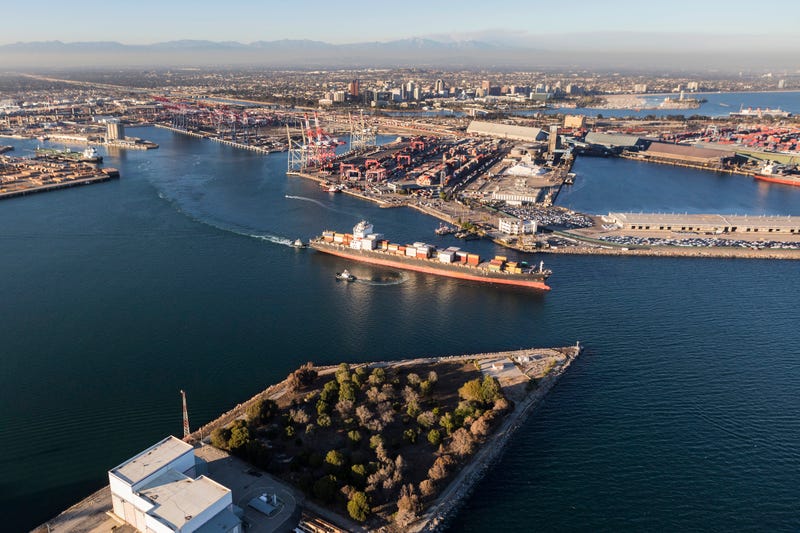
Long Beach longshore workers and terminal operators moved 707,537 twenty-foot equivalent units in September, a 3.9% decrease compared to the same month in 2024, port officials announced Friday, citing softening consumer demand and rising prices due to federal trade policies.
Want to get caught up on what's happening in SoCal every weekday afternoon? Click to follow The L.A. Local wherever you get podcasts.
Imports decreased 6.9% to 388,084 TEUs and exports declined 3.6% to 85,081 TEUs. Empty containers moving through the port increased by 161 containers to 324,372 TEUs.
"Tariffs are impacting how consumers and business owners make financial decisions and purchases," Port of Long Beach CEO Mario Cordero said in a statement. "Our Supply Chain Information Highway digital cargo tracker is forecasting a relatively stable October, followed by a slight decline in November due to anticipated weather-related delays and vessel scheduling changes."
In the nine months of 2025, the Port of Long Beach moved 7,390,245 TEUs, representing an increase of 6.8% from the same period in 2024. Officials also noted the third quarter of 2025 was the second-busiest quarter on record with 2,643,614 TEUs moved between July 1 and Sept. 30.
"I commend our industry and labor partners for their continued hard work to keep goods moving through the port," Long Beach Harbor Commission President Frank Colonna said in a statement. "Our reputation as the primary gateway for trans-Pacific trade relies on our ability to ensure the swift, reliable and sustainable shipment of goods."
On Thursday, Port of Los Angeles Executive Director Gene Seroka announced a similar decrease in cargo occurred in September at their facility. Port officials warned that continued uncertainty at the federal level may impact the supply chain and port operations.
"As trade policy unfolds, we can only predict more unpredictability," Seroka said in a statement. "When sweeping changes were first announced, importers abruptly stopped their orders from China. When those policies were softened and deadlines extended, cargo volume picked up again. The supply chain has been on a roller coaster all year and that ride continues.
"Approximately 20% of vessels that call at the Port of Los Angeles are China-made. Some cargo-handling equipment and cranes are also manufactured in China. Tariffs in one area tend to lead to rising prices in other segments, in the end, making goods more expensive," Seroka added.
Last week, President Donald Trump announced a "100% across-the-board tariff" on imported goods from China, which he said would take effect Nov. 1. The move comes as retailers, among other stakeholders, are just adapting to Trump's previously announced 30% tariff on imported goods from China.
"Don't worry about China, it will all be fine!" the president posted Sunday on Truth Social, his social media network.
In April, Trump threatened a 145% tariff on Chinese goods while China threatened a 125% tariff on American goods. The two nations later imposed tariffs at 30% and 10%, respectively, while they continued negotiations on a broader trade deal.
The president imposed tariffs ranging from 25% to 30% on other U.S. trading partners such as Japan, Korea, India, Mexico and Canada.
"It's been a whirlwind, to say the least, and I'm not sure there are calm winds ahead just yet," Seroka said.
Follow KNX News 97.1 FM
Twitter | Facebook | Instagram | TikTok
